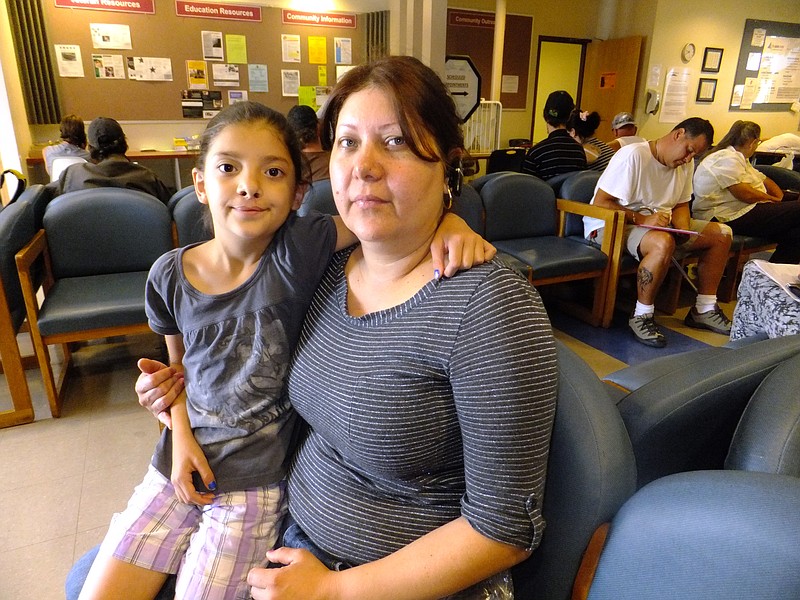WASHINGTON (AP) - The nation's poverty rate remained stuck at a record level last year, while household income dropped and the number of people who don't have health insurance declined.
A Census Bureau report released Wednesday provided a mixed picture of the economic well-being of U.S. households for 2011 as the nation enters the final phase of a presidential election campaign in which the economy is the No. 1 issue.
The overall poverty rate stood at 15 percent, statistically unchanged from the 15.1 percent rate in the previous year. Experts had expected a rise in the poverty rate for the fourth straight year, but unemployment benefits and modest job gains helped stave that off, the bureau reported. For last year, the official poverty line was an annual income of $23,021 for a family of four.
While unemployment eased slightly from 2010 to 2011, the gap between rich and poor increased. The median, or midpoint, household income was $50,054, 1.5 percent lower than 2010 and a second straight annual decline.
In a blog post, the White House said the latest figures show government policies can help the poor, middle class and uninsured, while more work remains to be done.
"While we have made progress digging our way out of the worst economic crisis since the Great Depression, too many families are still struggling and Congress must act on the policies President Obama has put forward to strengthen the middle class and those trying to get into it," the White House post said.
At a fundraising event in Jacksonville, Fla., Obama's GOP rival for the White House, Mitt Romney, said the president "is the candidate that's pushed the middle class into poverty. We're the party of those who want a brighter, prosperous future for themselves and for their kids. We're not the party of the rich. We're the party of the people who want to get rich."
By total numbers, roughly 46.2 million people remained below the poverty line last year, unchanged from 2010. That figure was the highest in the more than half a century that records have been kept. The 15 percent poverty rate was about the same as it was in 1993 and was the highest since 1983.
Broken down by state, New Mexico had the highest share of poor people, at 22.2 percent, according to rough calculations by the Census Bureau. It was followed by Louisiana, the District of Columbia, South Carolina, Arkansas and Georgia. On the other end of the scale, New Hampshire had the lowest, at 7.6 percent.
Bruce D. Meyer, an economist at the University of Chicago, said it was disappointing that poverty levels did not improve. He described it as a sign of lingering problems in the labor market, even with recent declines in the unemployment rate. "The drop in the unemployment rate has been due in significant part to workers leaving the labor force, because they are discouraged, back in school, taking care of family or other reasons," he said.
Some economists were just relieved the poverty level wasn't higher in the struggling economy.
"This is good news and a surprise," said Sheldon Danziger, a University of Michigan economist who closely tracks poverty. He pointed to a continuing boost from new unemployment benefits passed in 2009 that gave workers up to 99 weeks of payments after layoffs and didn't run out for many people until late 2011. Also, job gains in the private sector helped offset cuts in state and local government workers.
"It would indicate the stimulus was even more effective than believed," he said.
The official poverty level is based on a government calculation that includes only income before tax deductions. It excludes capital gains or accumulated wealth, such as home ownership.
As a result, the official poverty rate takes into account the effects of some stimulus programs passed in 2009, such as unemployment benefits, as well as jobs created or saved by government spending. It does not factor in noncash government aid such as tax credits and food stamps.

